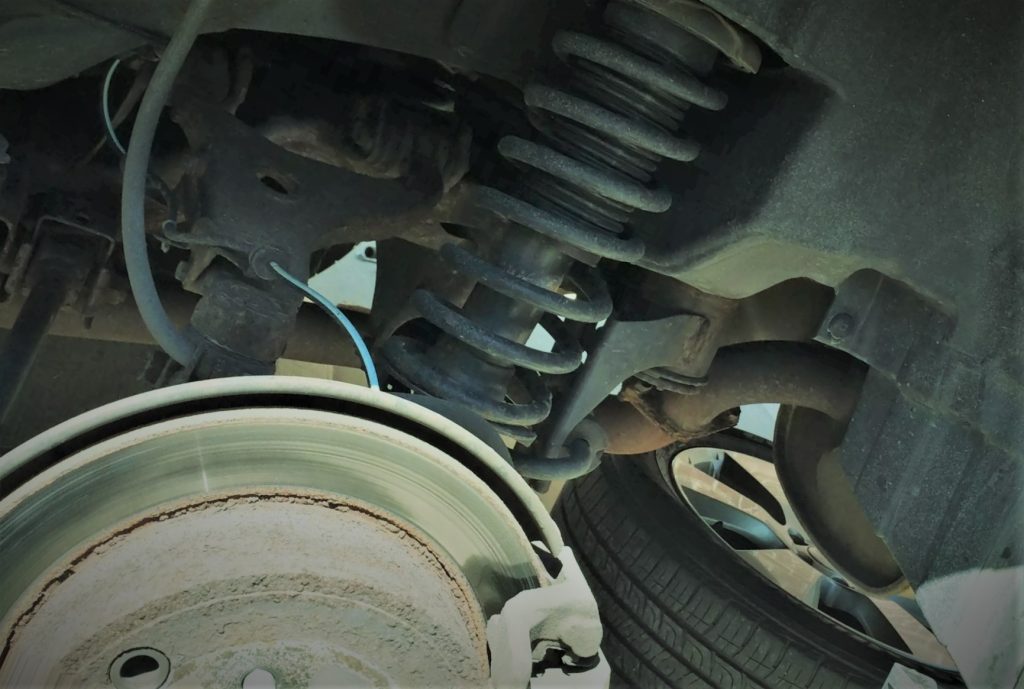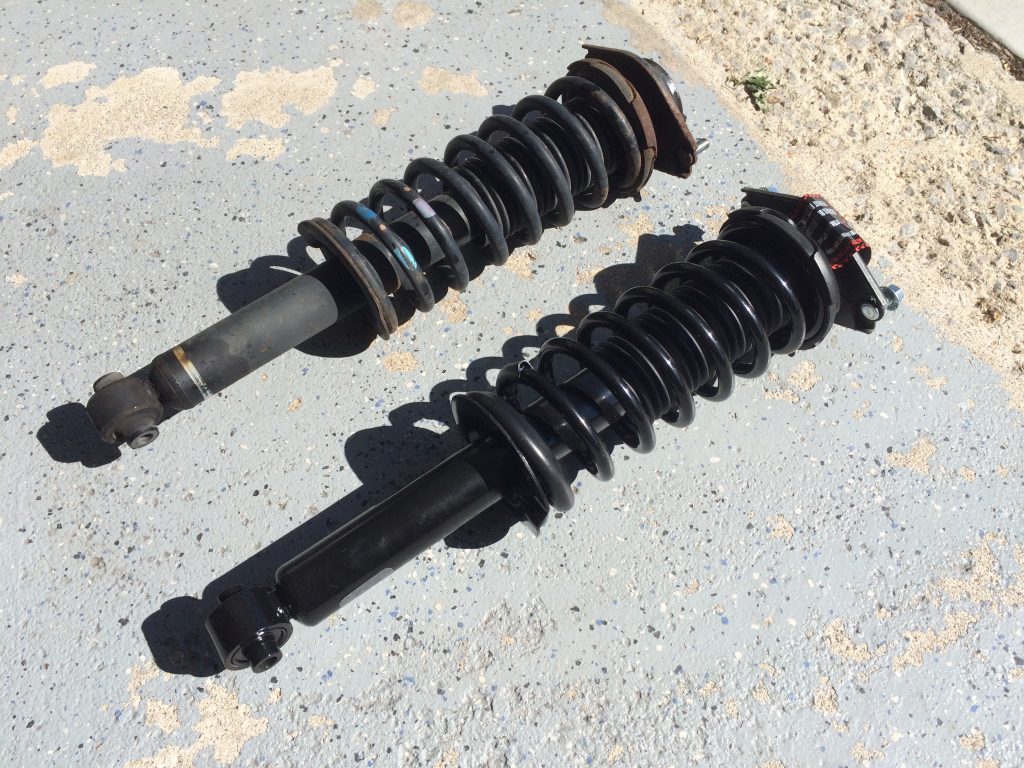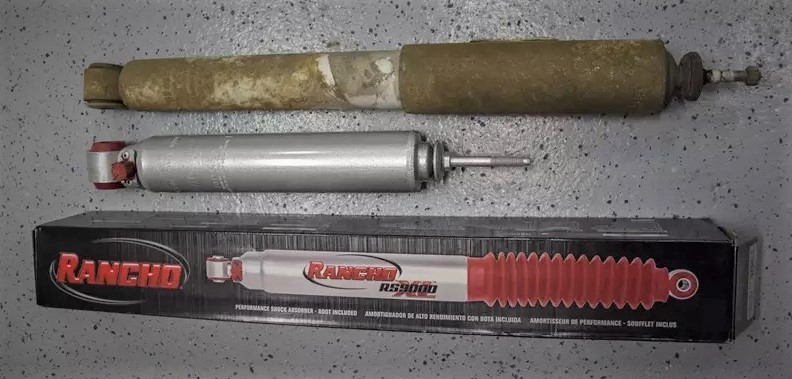If you read our earlier story on how to diagnose front suspension problems, you learned about some common suspension issues and, more importantly, how to fix them and what parts you’ll need to do it.
But if you noticed, we didn’t talk that much about shocks and struts. That’s because shock absorber tech is a pretty complex subject and we wanted to dedicate an entire standalone article to the topic.
So, without any further ado…
How Do Shock Absorbers Work?

First things first, let’s talk about the role of a shock absorber in a vehicle’s suspension system. And to do that, we called up the suspension tech experts at Monroe Shocks and Struts for some insight. Here’s what they told us in a nutshell.
The main job of a shock—or technically speaking, a damper—is to control spring and suspension movement. Done properly, it ensures that the tires remain in constant contact with the road surface.
A shock works by turning the kinetic energy of spring movement into thermal, or heat energy, and dissipating it through the shock’s hydraulic fluid. And it does this job via a piston valve and rod assembly that’s located within the shock’s fluid chamber. As the suspension travels up and down, a small amount of hydraulic fluid is forced through tiny holes inside the piston. This controls piston and rod movement, which in turn controls how fast the springs move up and down.
The amount of resistance, or damping, a shock absorber develops depends on a few factors, like how fast the suspension moves, along with the number and size of the holes in the piston valve. All modern shocks are velocity-sensitive. which is a fancy way of saying that faster the suspension moves, the more resistance the shock provides.
This is handy, because it allows the shock to control suspension bounce, body roll, brake dive, and squat under acceleration.
What’s the Difference a Between and a Shock & Strut?
It’s easy to get caught up in the names here, but understand that struts function much the same as shocks. They key difference is that, unlike a shock, a strut is also a structural component of the suspension.
Struts can take the place of two or three conventional suspension components, and are often used as a pivot point for steering and to adjust the position of the wheels for alignment purposes.
What shocks can’t do is compensate for sagging coil or leaf springs. In other words, if your vehicle’s tail is dragging, you will need to install new springs along with the shocks to restore proper ride height.
The 2 Basic Shock Designs: Twin-Tube and Monotube
For most stock replacement applications, you’ll likely come across two main shock absorber designs, and there are pros and cons of each. We’ll break down the distinctions here:
- Twin-tube, or telescoping shocks, have two cylinders. The inner, or working cylinder, is where the piston valve and rod move up and down. The outer cylinder serves as a reservoir for the hydraulic fluid. A stationary base valve controls fluid flow between both cylinders. The piston and base valves control the shock’s compression and rebound by controlling how fast the fluid flows back and forth between the cylinders.
Some twin-tube shocks have low pressure nitrogen gas instead of air in the outer cylinder. The gas compresses slightly as the shock moves to reduce fluid aeration and absorb vibration for a softer ride. On the downside, twin-tube shocks don’t dissipate heat quickly and have a smaller piston valve and less fluid than a monotube shock, so they have less damping force and slower responsiveness.
- Monotube shocks have a single cylinder that houses a hydraulic fluid chamber, a pressurized gas chamber, and a piston valve/rod assembly. A free-floating piston and seal separates the oil from the gas. The piston assembly resides in the fluid chamber, which has no air or gas. That allows the valve to adjust quickly without aerating (creating air in) the fluid. That helps prevent the shock from “fade,” or reduced performance.
Monotube shocks have a larger piston valve and hold more fluid than a twin-tube design, so they create more damping force and respond faster to suspension movement. The downsides to monotubes are price, a stiffer ride thanks to the high-pressure gas, and increased susceptibility to damage from road debris.
Air Shocks
In some cases, you may come across air shocks. Instead of hydraulic fluid, the shock’s chambers are filled with air. By adjusting the air pressure, air shocks can help tailor a vehicle’s ride height to compensate for heavy loads or towing a trailer. Enterprising hot rodders in the 1970s bolted air shocks to their muscle cars to jack up the rear ends and make room for big tires. Aired up to maximum pressure, the shocks provided little to no damping and made the car ride like a dump truck—but it did look cool.
On later model vehicles with factory-installed air suspension, the shock or strut is really more of an air spring. They have a pressurized, flexible rubber bellows and are hooked to an electronically controlled onboard compressor. The system monitors and continuously adjusts air pressure in the bellows based on road conditions, keeping vehicle ride height at factory specifications and providing a smoother ride than a suspension with conventional springs and shocks.
There’s a subset of air suspension systems designed to help stabilize trucks and other hard-working cargo haulers and tow rigs. The Summit Racing folks installed a set of airbags on a Ram 2500 HD truck—you learn more about it and watch the install in the video below:
Save Time with “Loaded” Struts
If you have to replace a set of struts, consider getting loaded struts. These have the strut, spring, mounts, and hardware factory-assembled as a unit—just slip the old strut assembly out and bolt the new one in. It’s easier and also safer as you don’t have to deal with removing the old coil spring.

7 Signs That Your Shocks or Struts Are Going Bad
Since they tend to wear out gradually, and you get used to the way the vehicle drives over time, it can be hard to know when shocks and struts need to be replaced.
That said, there are a few red flags to look, listen, and feel for as you drive along—here are seven of the biggest ones:
- Excessive vibration in the steering wheel and constant steering corrections due to instability at highway speeds
- The vehicle leans or “tips” to the outside of a sharp turn
- Excessive front end diving or swerving during hard or panic braking
- Front end rise and/or rear-end squat under hard acceleration
- Excessive shaking or suspension rattles after hitting small bumps or potholes
- Unusual or irregular tire wear because the tires are not in constant contact with the road
- Fluid leaks that indicate the seals have broken and hydraulic fluid is escaping
Some of the Best Replacement Vehicle Shock Brands

So, think your shocks or struts are on their way out? The good news is, shocks and struts are relatively easy to replace—even for the home DIY’er with some 101 automotive knowledge and some basic hand tools. Here are some of the most popular shock brands that you’ll come across if you need a good quality stock replacement shock or strut:
- Gabriel – Shocks and struts, air shocks, loaded strut assemblies
- Monroe – Shocks and struts, air shocks, loaded strut assemblies
- KYB – Shocks and struts, electronically controlled shocks, loaded strut assemblies
- Arnott – Air shocks and struts, air to spring-based shock conversion kits
- ACDelco – Shocks and struts, specialty shocks and struts for GM vehicles
- Motorcraft – Loaded strut assemblies
- Mopar Replacement – Shocks and struts for Chrysler, Dodge, RAM, and Jeep vehicles
- Summit Racing – Loaded strut assemblies
- Dorman – Air shocks and struts, air to spring-based shock conversion kits

Comments